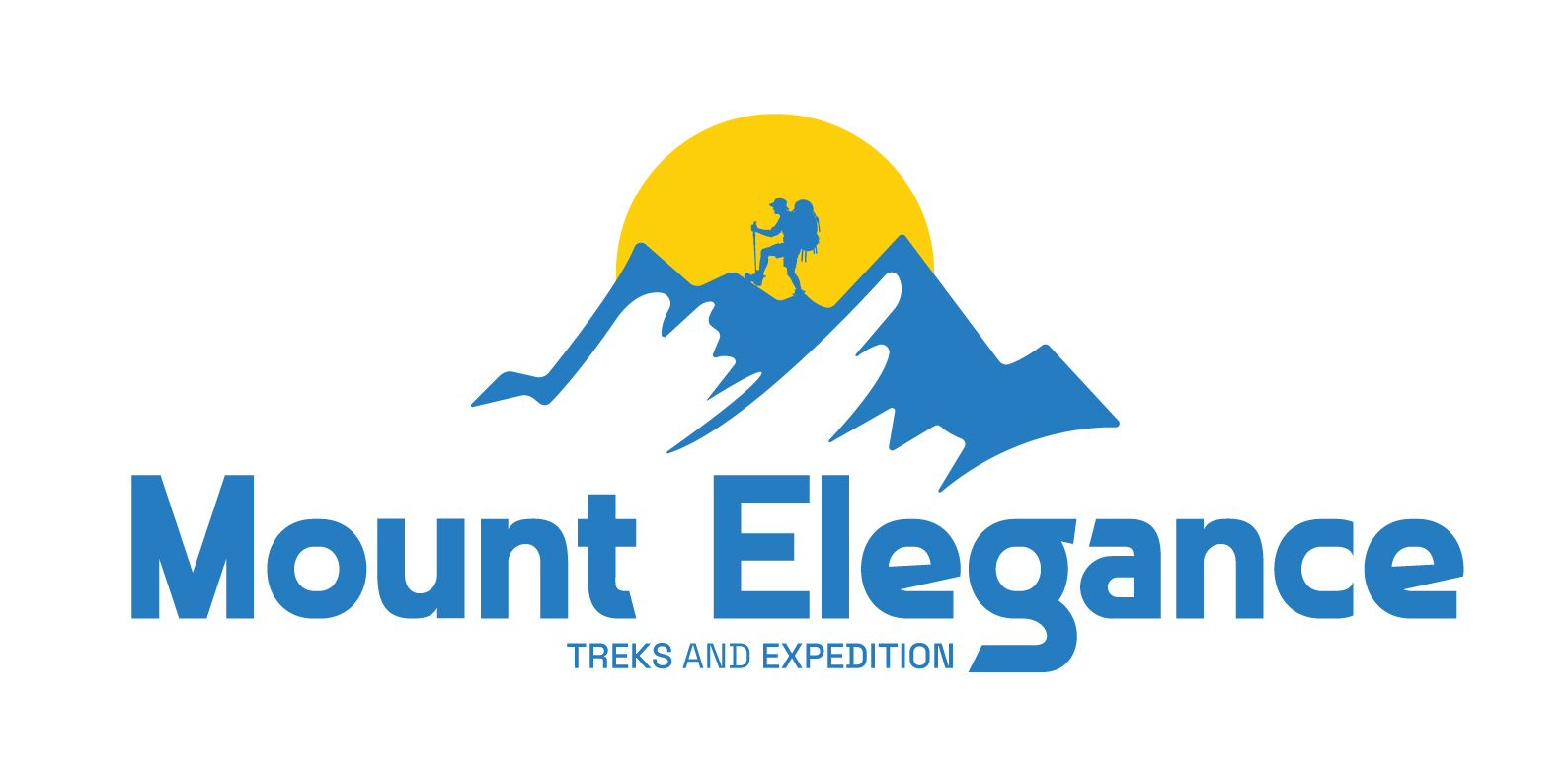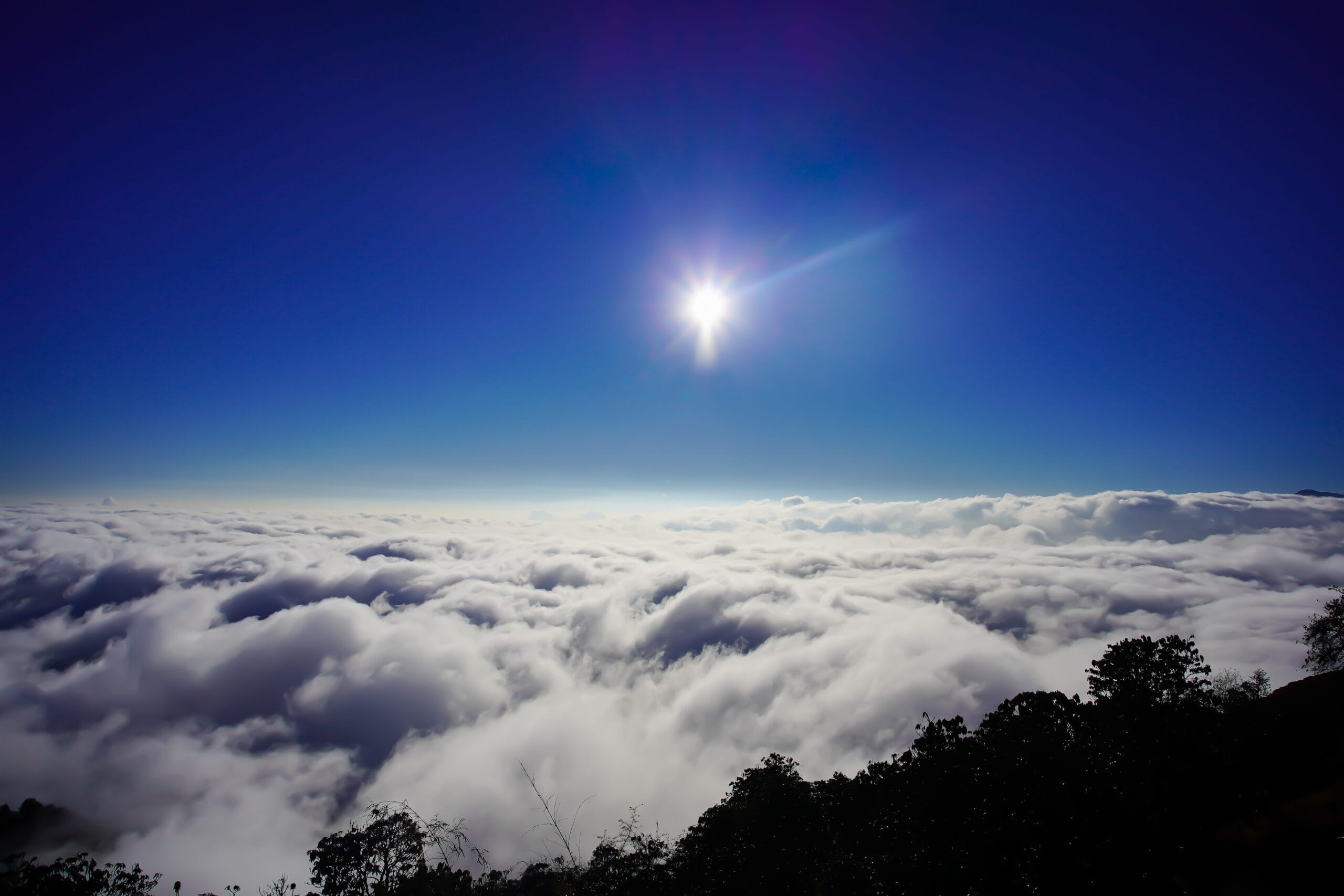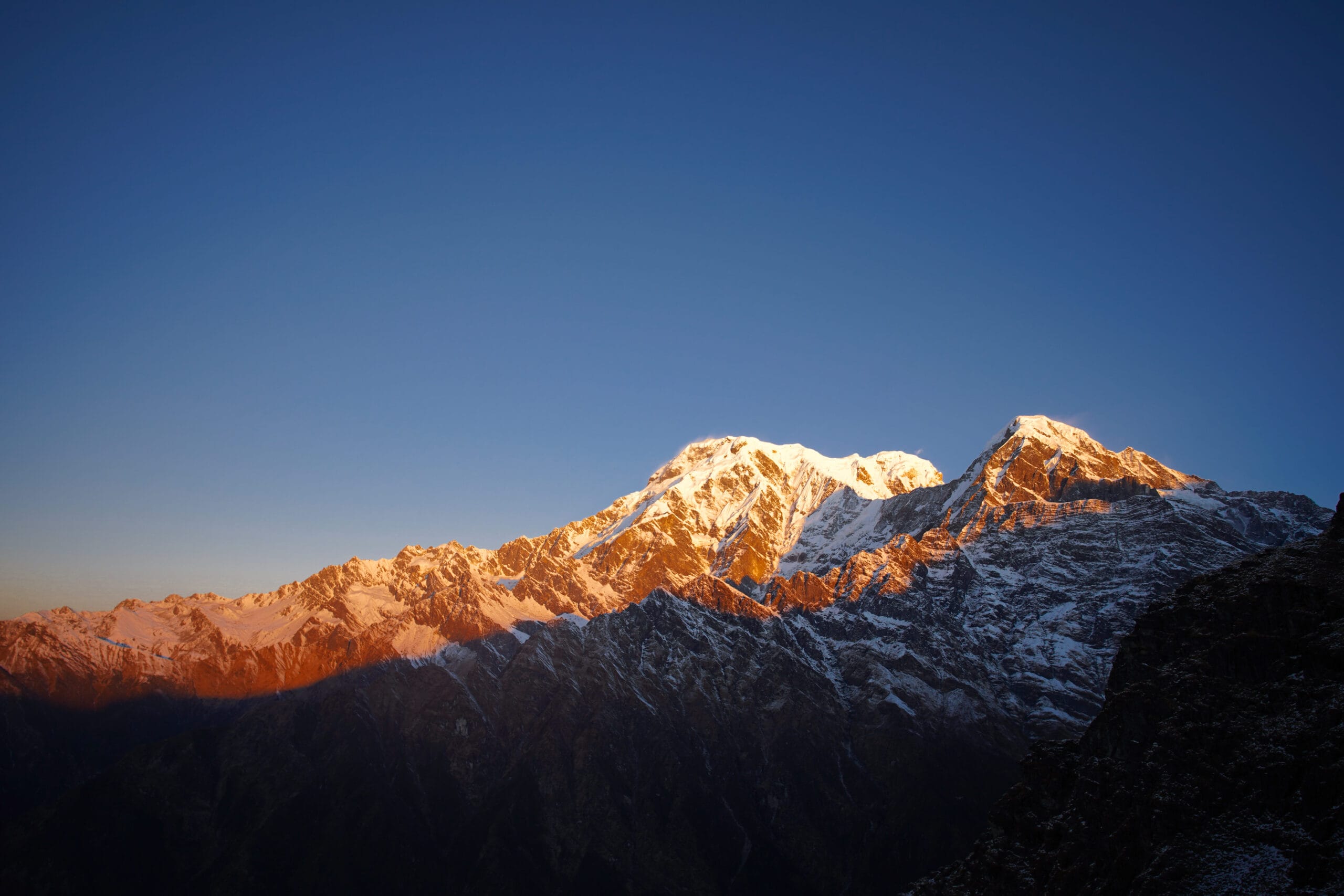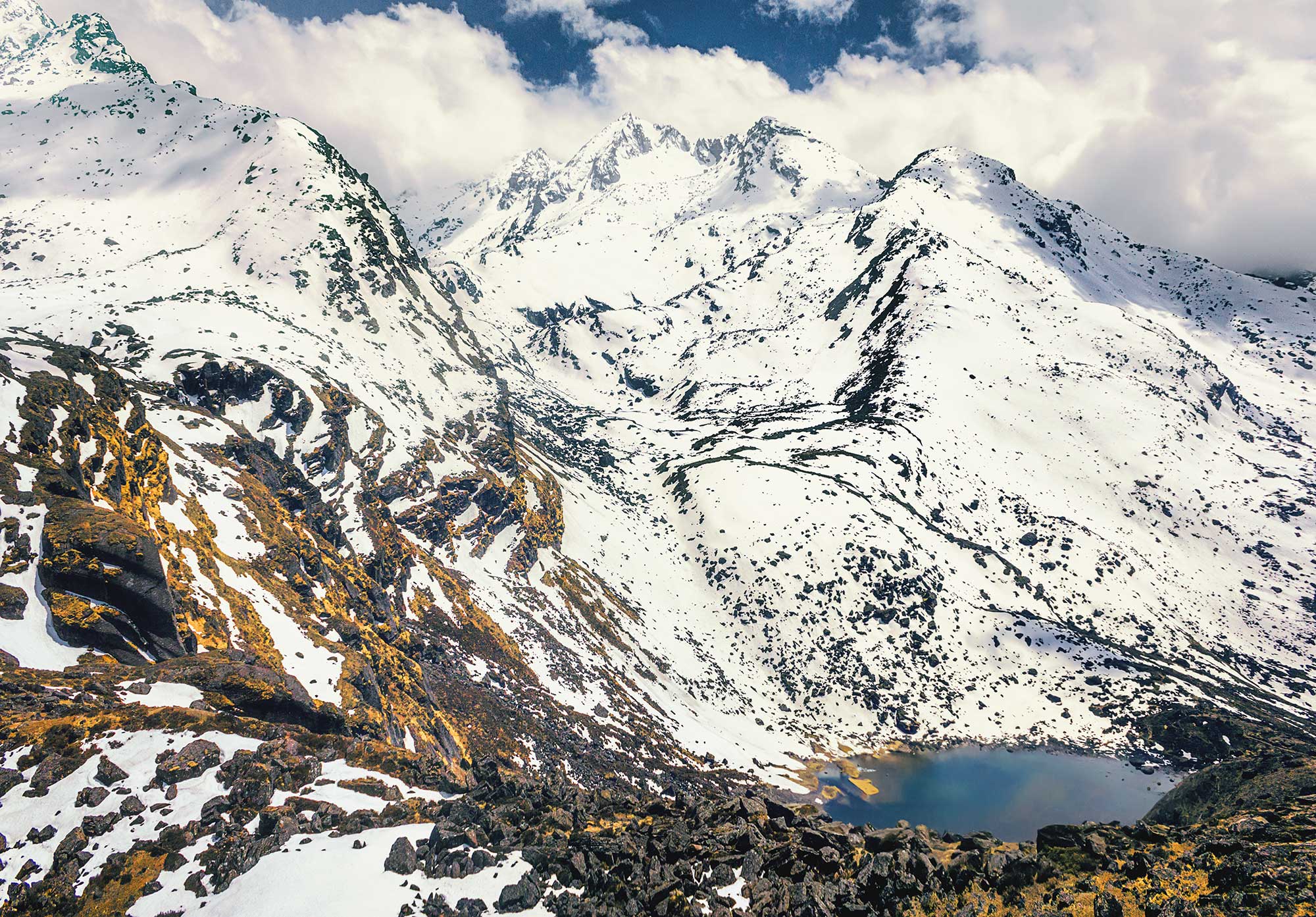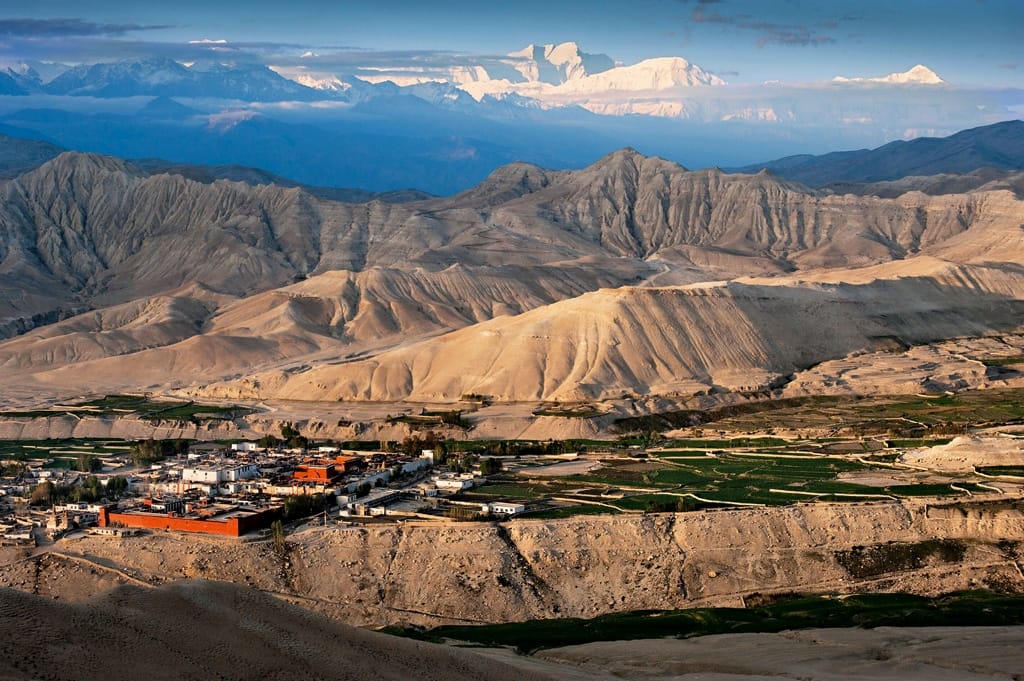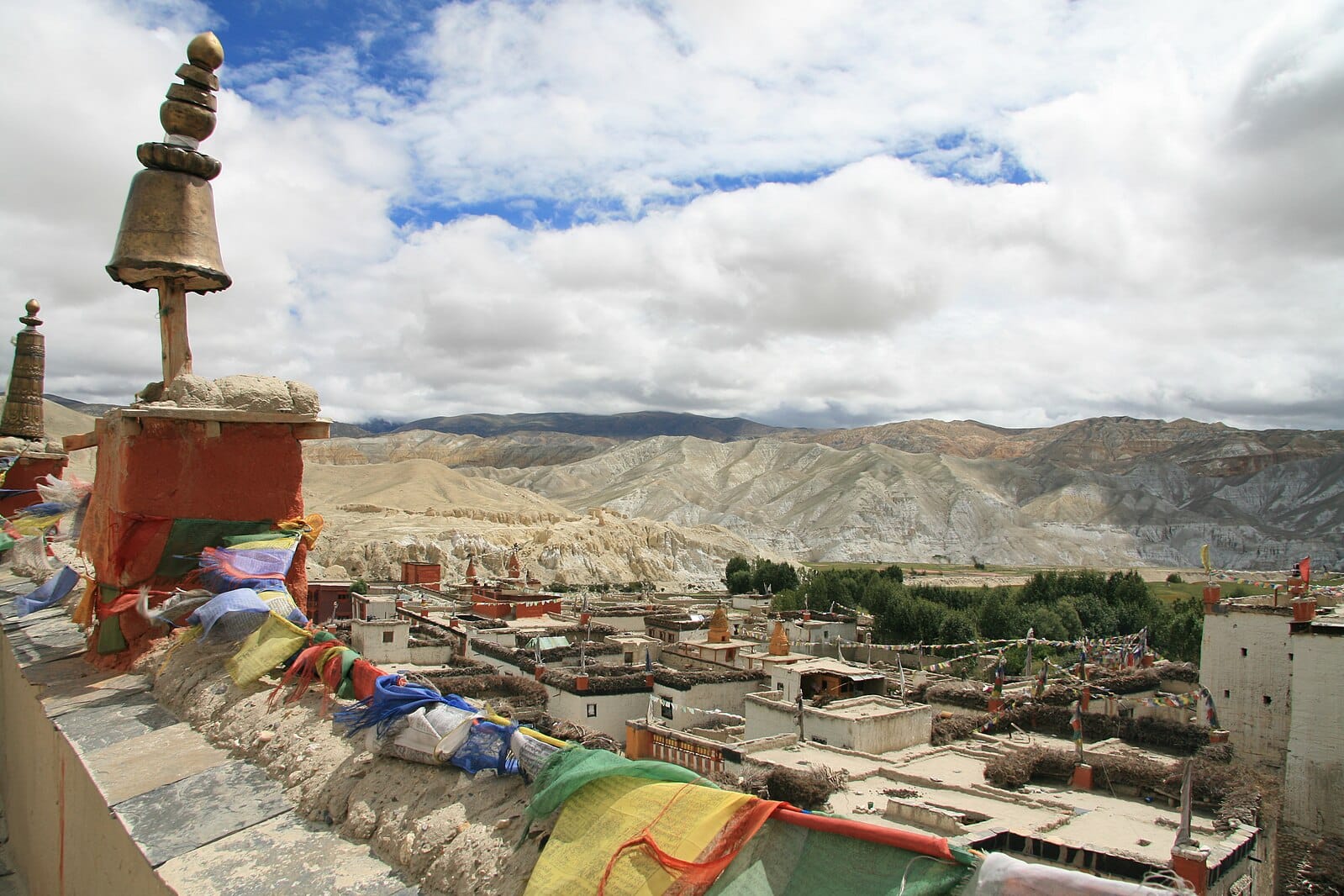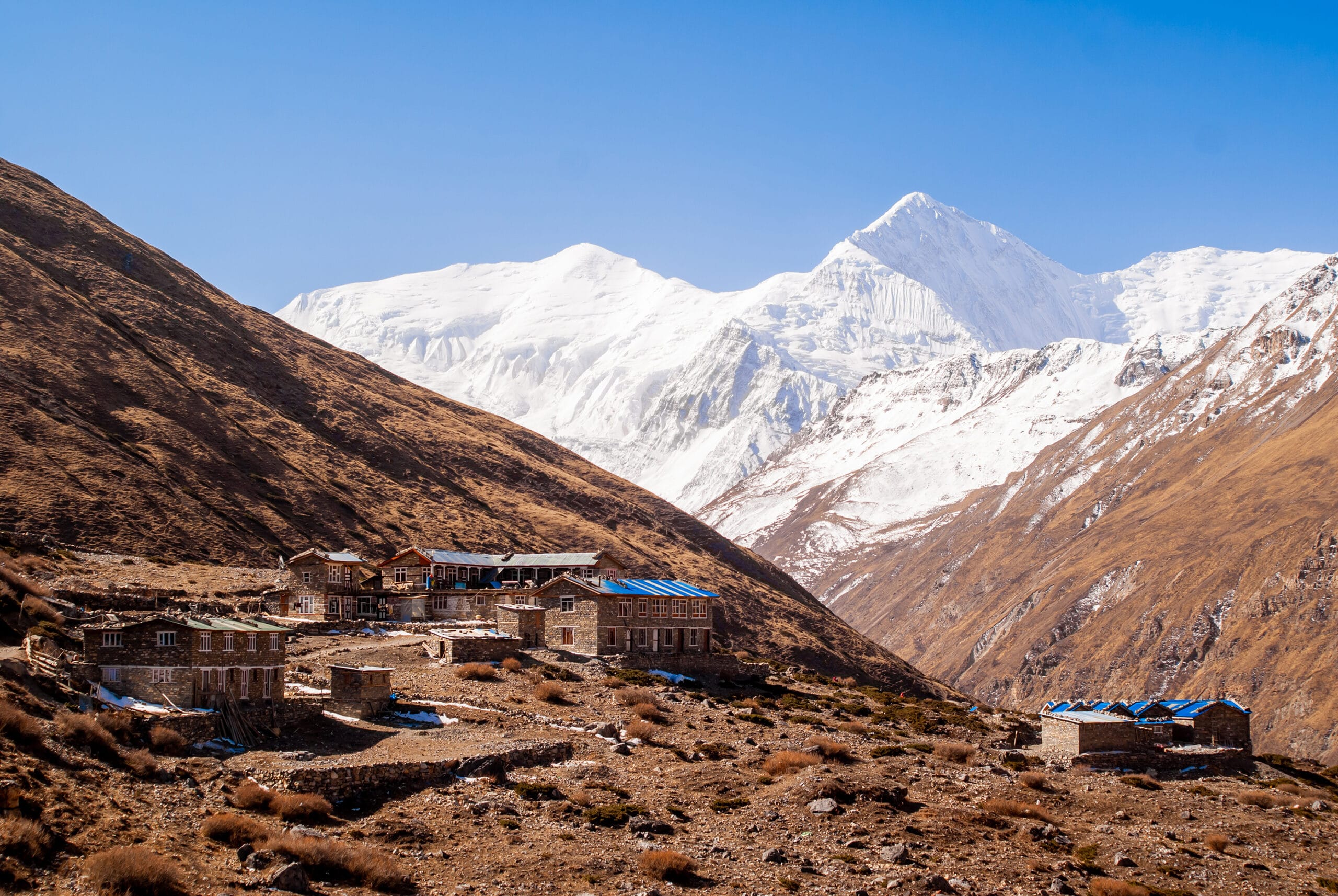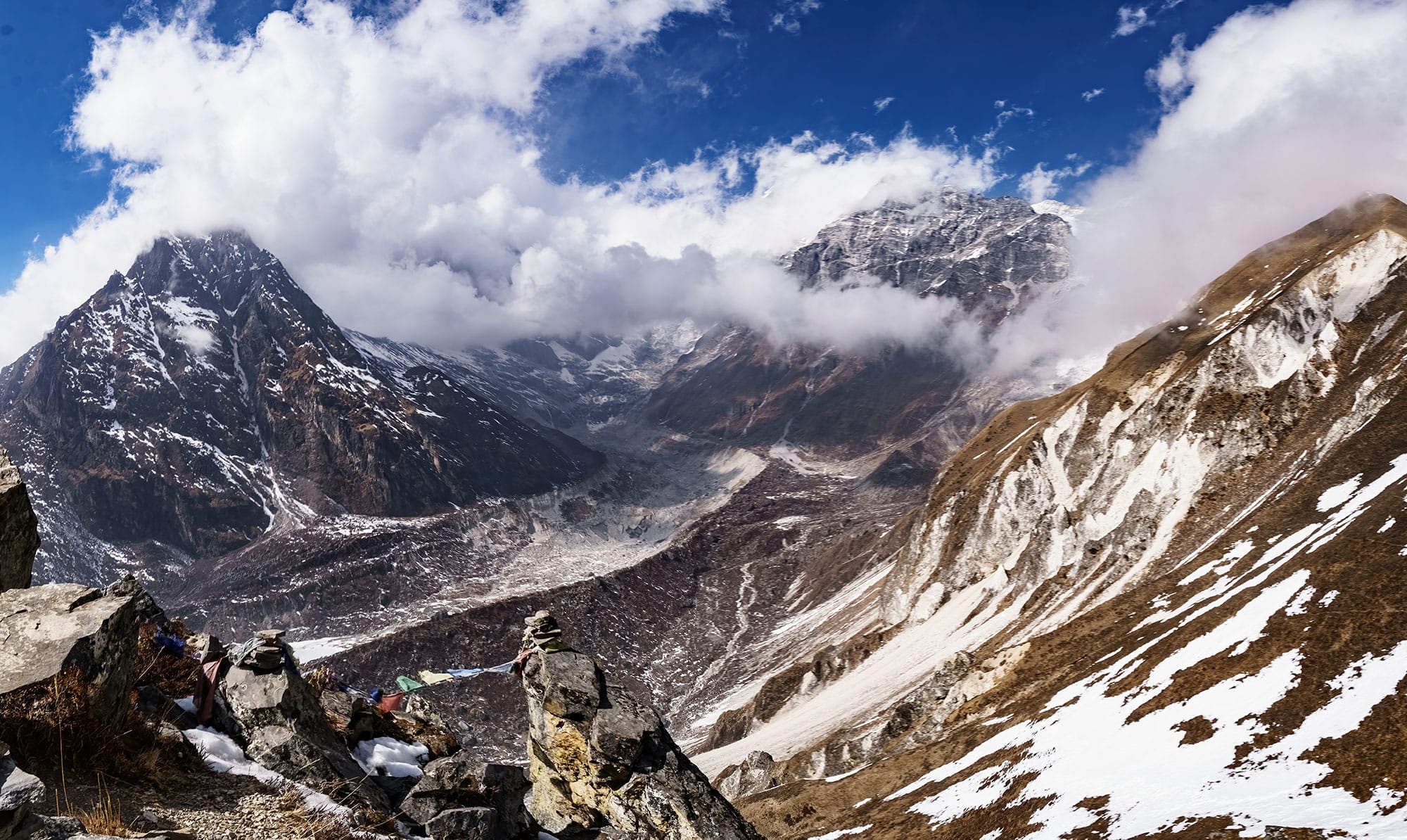Muktinath Jeep Tour – 6 Days
Best Season
Highest Altitude
Trip Overview
Embark on an exhilarating Muktinath Jeep Tour through Nepal’s from the bustling streets of Kathmandu to the sacred Muktinath Temple. Begin your adventure with an exploration of Kathmandu, followed by a scenic drive to Pokhara, nestled beside the tranquil Phewa Lake. Your journey continues with a challenging yet rewarding drive to Muktinath. It’s a revered site for both Hindus and Buddhists. Along the journey enjoy the breathtaking views of the Annapurna and Dhaulagiri ranges. Conclude your journey with a return to Kathmandu, reflecting on the rich experiences and memories created.
Muktinath Jeep Tour offers a spiritual experience like no other, with its 108 sacred water spouts.Explore the eternal flame that has been burning for centuries. The drive to Muktinath is an adventure in itself. Eventually, passing through the dramatic landscapes of the Kali Gandaki Valley, with breathtaking views of towering peaks and deep gorges. After soaking in the spiritual atmosphere of Muktinath, you’ll return to Pokhara, where you can relax and take in the beauty of this peaceful lakeside town.
The journey concludes with a return to Kathmandu, giving you a final opportunity to immerse yourself in the rich culture. This trip is not only a pilgrimage to one of the most sacred sites in Nepal but also an opportunity to experience the diverse landscapes and vibrant culture that make Nepal such a unique destination. Whether you’re seeking spiritual fulfillment or simply want to explore the natural beauty of the Himalayas, this itinerary offers a fulfilling and memorable experience.
Muktinath Tour Highlights
- Scenic drives through the picturesque countryside of Nepal.
- Visit the sacred Muktinath Temple, a spiritual site for Hindus and Buddhists.
- Breathtaking views of the Annapurna and Dhaulagiri mountain ranges.
- Explore the beautiful city of Pokhara, known for its lakes and mountain views.
- Experience the vibrant culture and heritage of Kathmandu.
Route Overview
- Start at Kathmandu Durbar Square: Begin your journey in the heart of Kathmandu at Kathmandu Durbar Square, renowned for its ancient architecture and cultural significance. Visit iconic sites such as Kumari Ghar, the residence of the Living Goddess, and Taleju Temple.
- Visit Swayambhunath Stupa (Monkey Temple): Next, drive to Swayambhunath Stupa, perched on a hilltop. Climb the steps to reach the stupa and enjoy sweeping views of the Kathmandu Valley. The site, adorned with prayer flags and wheels, offers a spiritual experience.
- Explore Pashupatinath Temple: Proceed to Pashupatinath Temple, an important Hindu shrine on the Bagmati River’s banks. Witness the sacred rituals and cremation ceremonies that take place along the riverbanks.
- Discover Boudhanath Stupa: Continue your tour to Boudhanath Stupa, a major pilgrimage site for Tibetan Buddhists. Circumambulate the stupa, observe devotees spinning prayer wheels, and visit the surrounding Tibetan monasteries.
- End at Asan Market: Conclude your exploration at Asan Market, a bustling and historic market in Kathmandu. Experience local life as you wander through stalls selling fresh produce, spices, textiles, and handicrafts.
- Return to Hotel: After a day filled with cultural and historical exploration, return to your hotel, reflecting on Kathmandu’s vibrant heritage and sights.
Significance of Cities
- Kathmandu: The bustling capital city of Nepal, known for its rich history, vibrant culture, and UNESCO World Heritage Sites. Key sites include temples, stupas, and ancient royal palaces that reflect Nepal’s architectural and spiritual heritage.
- Pokhara: A picturesque city situated by Phewa Lake, renowned for its serene environment and stunning views of the Annapurna and Dhaulagiri mountain ranges. It’s a popular destination for relaxation and exploration.
- Muktinath: A sacred pilgrimage site located at 3,710 meters in the Mustang district. It is revered by both Hindus and Buddhists, featuring the sacred 108 water spouts and an eternal flame. Muktinath is a significant spiritual destination, offering breathtaking views of the surrounding Himalayan peaks.
Recommended Time To Visit
- The best time to embark on the Muktinath Jeep Tour is from Autumn (September to November) or Spring (March to May). During these months, the weather is generally clear, providing stunning views of the mountains and optimal conditions for traveling and sightseeing.
Itinerary
Upon your arrival at Tribhuvan International Airport in Kathmandu, you will be welcomed by our representative and transferred to your hotel in the heart of the city. Once you've checked in, take some time to relax and refresh after your flight. Depending on your arrival time, you might explore the surrounding area such as Thamel, known for its lively streets, colorful shops, cafes, and traditional markets. This vibrant district offers a perfect introduction to Nepalese hospitality and culture. In the evening, you’ll receive a short briefing about the upcoming journey and have time to prepare for the adventurous days ahead.
As the cultural and spiritual capital of Nepal, Kathmandu offers glimpses into ancient traditions and rich heritage. You may choose to explore some nearby attractions like the Garden of Dreams or enjoy a local dinner with traditional Nepali music and dance. The blend of ancient architecture, bustling energy, and spiritual ambiance makes your first day in Nepal both soothing and exciting. Rest well tonight, as the next day brings a long but scenic drive to the beautiful lake city of Pokhara, your next destination on this spiritually enriching Muktinath tour.
Today begins with a scenic overland drive to Pokhara, approximately 6–7 hours west of Kathmandu. Along the way, you'll pass through lush valleys, terraced hillsides, and traditional villages, offering a beautiful glimpse into Nepal’s countryside. Midway through the journey, you’ll make a stop at Kurintar to visit the Manakamana Temple, a sacred site dedicated to Goddess Bhagwati, believed to fulfill the wishes of her devotees. A thrilling cable car ride across the Trishuli River will take you to the hilltop temple, from where panoramic views of the surrounding hills and river below can be admired.
After paying your respects and enjoying the spiritual serenity of Manakamana, you’ll continue the drive to Pokhara, Nepal’s second-largest city and a hub of natural beauty. Upon arrival, check into your lakeside hotel and unwind from the day’s journey. You can enjoy a peaceful evening stroll along Phewa Lake, where reflections of the Annapurna range dance on the water. The city’s relaxed atmosphere, cool breeze, and mountain backdrop set the tone for the spiritual journey ahead to Muktinath. Overnight in Pokhara.
Today, you’ll embark on a thrilling jeep ride from Pokhara to Muktinath, one of the most sacred pilgrimage sites for both Hindus and Buddhists. The journey is long—approximately 8–9 hours—but it is rich with natural wonders and cultural experiences. The road ascends along the Kali Gandaki Gorge, the deepest in the world, passing through charming towns like Tatopani, Ghasa, Marpha, and Jomsom. Each village offers its own cultural flavor, with views of towering peaks like Nilgiri, Dhaulagiri, and Tukuche forming the backdrop.
As you climb in altitude, the landscape transitions from lush green hills to dry, arid, and wind-swept terrain, resembling the Tibetan plateau. Muktinath lies in the trans-Himalayan region of Mustang, a place of mystical beauty and spiritual depth. Upon arrival, you can relax and acclimatize while soaking in the peaceful ambiance of the area. This remote pilgrimage site has long drawn spiritual seekers from all over the world. Overnight in Muktinath or nearby Ranipauwa village.
Wake up early to explore the Muktinath Temple, a sacred site revered by Hindus as the place of liberation (moksha) and by Buddhists as one of the 24 tantric places. The temple complex lies at an elevation of 3,710 meters and features 108 water spouts known as “Muktidhara” through which devotees pass for spiritual cleansing. Adjacent to the temple is a Buddhist monastery and a natural eternal flame, symbolic of the connection between the elements of fire and water. The early morning experience is serene, with the backdrop of snow-capped peaks and crisp mountain air adding to the divinity of the place.
After the spiritual exploration, begin your scenic return drive to Pokhara. Along the way, you’ll again pass through quaint villages and apple orchards, especially around Marpha, known for its delicious apple brandy and traditional whitewashed houses. You’ll arrive in Pokhara by late evening, where you can freshen up and enjoy a leisurely dinner by the lakeside. The journey back down offers an entirely new perspective on the landscape and provides time to reflect on the peaceful experience at Muktinath. Overnight in Pokhara.
After breakfast, begin the journey back to Kathmandu via the Prithvi Highway, retracing your scenic route along rivers, hills, and bustling local towns. This 6–7 hour drive offers the perfect opportunity to take in the final sights of Nepal’s rural life, with riverside villages, terraced farmlands, and traditional settlements lining the route. You can stop along the way for lunch and tea breaks, and perhaps even pick up some local crafts or souvenirs from roadside vendors.
Upon arriving back in Kathmandu, check into your hotel and enjoy the evening at leisure. If you still have energy, you may want to explore the markets of Asan or revisit Thamel to shop for souvenirs and handicrafts. In the evening, enjoy a farewell dinner at a traditional Nepali restaurant with a cultural dance performance as a celebration of your unforgettable journey to the Himalayas. Rest well tonight as your journey comes to a close the next day.
Today marks the end of your spiritual and scenic journey to Muktinath. Depending on your flight schedule, you may have some free time in the morning to do any last-minute shopping or explore nearby cafes. Our team will ensure a comfortable transfer to Tribhuvan International Airport for your departure. Take with you not just souvenirs, but also the blessings of Muktinath, the warmth of Nepalese culture, and the unforgettable landscapes of Mustang and Pokhara.
As your plane lifts off, you’ll leave with memories of peaceful mountain shrines, scenic Himalayan drives, and spiritual encounters that will stay with you for a lifetime. Until next time—Namaste and safe travels.
Book Now
Send an Inquiry
Got A Question?

Mr. Shishir Dhakal
Price Inclusion
- All transportation by private vehicle as per the itinerary.
- Accommodation in 3-star hotels with breakfast.
- Sightseeing tours as mentioned in the itinerary.
- Entrance fees to temples and monuments.
- Experienced English-speaking guide.
Price Exclusion
- International airfare and visa fees.
- Lunch, dinner, and personal expenses.
- Travel insurance.
- Tips for guides and drivers.
Additional Information
Meals and Accommodation
Meals:
- Breakfast: Provided daily at your hotel, offering a range of options including local and continental dishes.
- Lunch and Dinner:
- Kathmandu: Options at local restaurants near your hotel or in the Thamel area, serving Nepali and international cuisine.
- Pokhara: Plenty of restaurants around Phewa Lake offer scenic views and a variety of cuisine, from traditional Nepali to continental.
- Muktinath: Meals here are more basic and focused on traditional Nepali food, with limited options due to the remote location.
Accommodation:
- Kathmandu: Comfortable accommodation in a 3-star or higher hotel with breakfast included.
- Pokhara: Lakeside hotels with beautiful mountain views, providing a relaxing atmosphere.
- Muktinath: Basic but comfortable guest houses or lodges that provide a cozy stay in this high-altitude, pilgrimage destination.
Best Season for Muktinath Jeep Tour
The best seasons to trek the Mustang Jeep Tour are spring (March to May) and autumn (September to November), which offer favorable weather, clear skies, and stunning views.
Spring (March to May)
- Weather: Mild to warm with clear days, cool nights, and low humidity. Spring is ideal for trekking as the skies are clear and the conditions are comfortable.
- Temperature:
- Lower regions (2,500m to 3,500m): 15°C to 25°C during the day, 5°C to 10°C at night.
- Higher regions (up to 4,200m): 10°C to 20°C during the day, -5°C to 5°C at night.
- Highlights: The arid Mustang landscapes are at their most vibrant, and the spring flowers add color to the valleys. The dry climate of Mustang means rain is minimal, and cultural events such as the Tiji Festival bring a unique dimension to the trek, with colorful Buddhist ceremonies and rituals in Lo Manthang.
Autumn (September to November)
- Weather: Clear, dry weather with moderate temperatures and excellent visibilit
- Temperature:
- Lower regions (2,500m to 3,500m): 15°C to 25°C during the day, 5°C to 10°C at night.
- Higher regions (up to 4,200m): 10°C to 20°C during the day, -5°C to 5°C at night.
- Highlights: The autumn skies offer superb mountain views and picturesque landscapes. Clear post-monsoon air enhances visibility, making the distinct Mustang landscape even more captivating. This season coincides with local festivals, offering an opportunity to engage with Mustang’s rich Tibetan-influenced culture.
Winter (December to February)
- Weather: Colder temperatures and occasional snow, especially in higher regions. Skies are often clear, but conditions are challenging.
- Temperature:
- Lower regions (2,500m to 3,500m): 5°C to 15°C during the day, -5°C to 0°C at night.
- Higher regions (up to 4,200m): -5°C to 5°C during the day, -10°C to -5°C at night.
- Challenges: Cold weather and snowfall can make trails difficult to traverse. Winter is best for experienced trekkers prepared with proper gear.
Monsoon/Summer (June to August)
- Weather: Unlike other regions of Nepal, Mustang remains relatively dry during monsoon due to its location in the rain shadow of the Himalayas.
- Temperature:
- Lower regions (2,500m to 3,500m): 20°C to 30°C during the day, 10°C to 20°C at night.
- Higher regions (up to 4,200m): 15°C to 20°C during the day, 5°C to 10°C at night.
- Highlights: With minimal rainfall, the trails are quieter, and lush surroundings from occasional rain in the lower areas create a contrasting backdrop to Mustang’s barren landscapes.
Equipment Checklist
Trekking in Nepal is an incredible adventure, taking you through diverse landscapes, from lush forests to rugged mountain trails. To fully enjoy the experience, it’s crucial to pack the right equipment. Here’s an essential checklist to help you prepare for your trek, ensuring you’re ready for the challenges and beauty of the Himalayas.
1. Clothing
- Base Layers: Moisture-wicking base layers (thermal tops and bottoms) are essential for regulating your body temperature. Opt for lightweight, breathable materials.
- Mid Layers: Fleece jackets or lightweight down jackets provide warmth in colder temperatures. These layers should be easy to add or remove as needed.
- Outer Layers: A waterproof and windproof jacket is essential to protect against rain, wind, and snow. Make sure it’s breathable to stay comfortable during strenuous activities.
- Trekking Pants: Lightweight, quick-drying pants are ideal. Consider packing thermal pants for colder regions or seasons.
- Gloves, Hats, and Buffs: Warm gloves, a woolen hat, and a buff or neck gaiter help protect against the cold at high altitudes.
- Trekking Socks: High-quality, moisture-wicking socks (at least three pairs) are crucial to prevent blisters and keep your feet dry.
2. Footwear
- Trekking Boots: Sturdy, well-fitted, and waterproof trekking boots with good ankle support are essential. Break them in before your trek to avoid blisters.
- Sandals or Camp Shoes: Lightweight sandals or camp shoes for relaxing at tea houses or lodges after a long day of trekking.
3. Backpack and Storage
- Daypack (20-30 liters): A small, comfortable daypack with rain cover to carry essentials like water, snacks, camera, and extra layers.
- Duffel Bag (60-80 liters): For your main gear, use a durable, waterproof duffel bag that will be carried by porters.
- Dry Bags or Ziplock Bags: For protecting electronics, documents, and clothes from moisture.
4. Trekking Gear
- Trekking Poles: Adjustable trekking poles reduce the strain on your knees, especially during steep descents.
- Headlamp with Extra Batteries: Essential for early morning starts, late finishes, or use in lodges where electricity may be limited.
- Water Bottles and Purification: Carry reusable water bottles and purification tablets or a water filter to ensure safe drinking water.
- Sleeping Bag: A four-season sleeping bag rated for temperatures as low as -10°C to -15°C is recommended for high-altitude treks.
5. Health and First Aid
- Personal First Aid Kit: Include essentials like band-aids, antiseptic wipes, blister treatment, pain relievers, and any personal medications.
- Sunscreen and Lip Balm: High SPF sunscreen and lip balm are essential to protect against strong UV rays at high altitudes.
- Hand Sanitizer and Wet Wipes: Useful for maintaining hygiene when water is limited.
- Altitude Sickness Medication: Consult your doctor about medications like Diamox for preventing altitude sickness.
6. Personal Items and Extras
- Snacks and Energy Bars: Pack lightweight, high-energy snacks for a quick boost on the trail.
- Sunglasses with UV Protection: Essential for protecting your eyes from the intense sunlight and snow glare at high altitudes.
- Camera or Smartphone: To capture the breathtaking scenery. Don’t forget extra batteries or a portable charger.
- Personal Toiletries: Include biodegradable soap, toothbrush, toothpaste, and a small towel.
- Cash: Carry enough local currency for expenses along the trail, as ATMs are not available in remote areas.
7. Documents
- Passport and Visa: Carry your passport, visa, and photocopies in a waterproof pouch.
- Permits: Obtain trekking permits such as the TIMS card and national park or conservation area permits, depending on your route.
- Travel Insurance Details: Ensure you have comprehensive travel insurance covering high-altitude trekking, emergency evacuations, and medical expenses.
Final Tips
- Pack Light: Try to keep your backpack under 10-15 kg. The lighter your pack, the more enjoyable your trek will be.
- Layer Up: Layering is key for comfort in Nepal’s changing weather conditions. Bring versatile clothing that can be easily added or removed.
- Double-Check Your Gear: Before you set off, double-check that you have all the essentials. Missing a crucial item could make your trek less comfortable or even dangerous.
Frequently Asked Questions(FAQs)
What services does Mount Elegance Treks offer?
At Mount Elegance Treks and Expedition, we offer a wide range of services to make your adventure in Nepal a memorable and hassle-free experience. Our team of experts is dedicated to providing you with the best possible services, from trekking and peak climbing to cultural tours and wilderness expeditions.
Trekking and Expedition Services
We offer a variety of trekking and expedition services, including:
Trekking: We offer guided trekking services to popular destinations such as the Everest Base Camp, Annapurna Circuit, and Langtang Valley.
Peak Climbing: Our experienced guides and climbers will help you conquer some of the highest peaks in the world, including Island Peak and Mera Peak.
Wildlife Tours: Join us on a wildlife tour to see the majestic Bengal tiger, one-horned rhinoceros, and other endangered species in their natural habitats.
Cultural Tours: Explore Nepal’s rich cultural heritage on a guided tour, visiting ancient temples, monasteries, and traditional villages.
Logistical Services
We also offer a range of logistical services, including:
Hotel Booking: We can book your hotel accommodations in Kathmandu and other destinations in Nepal.
Transportation: Our team can arrange for transportation to and from the trekking start point, as well as during the trek.
Permits and Licenses: We will handle all necessary permits and licenses for your trek or expedition.
Camping and Lodging: We can provide camping and lodging facilities during your trek or expedition.
Support Services
Our team is dedicated to providing you with support services, including:
Guided Tours: Our experienced guides will accompany you on your trek or expedition, providing valuable insights and support.
Cuisine: We can provide you with delicious and nutritious meals during your trek or expedition.
First Aid: Our guides are trained in first aid and can provide medical assistance in case of an emergency.
Communication: We can provide you with communication facilities, including satellite phones and internet access.
Mount Elegance Treks’ Commitment to Quality
At Mount Elegance Treks and Expedition, we are committed to providing you with the highest quality services and experiences. Our team of experts is dedicated to ensuring your safety, happiness, and satisfaction. We look forward to welcoming you to Nepal and sharing our country’s beauty and culture with you.
Can Mount Elegance Treks arrange accommodation before and after treks?
Yes, we can definitely help you with accommodation arrangements before and after your trek. We have a network of hand-picked hotels, lodges, and tea houses that offer a range of options to suit different budgets and preferences. We can arrange for you to stay in Kathmandu or other cities before your trek, and also book your accommodation in local villages or towns along the way. Our team will work with you to tailor a customized accommodation plan that meets your needs and preferences. We can also provide recommendations and bookings for additional services such as airport transfers, city tours, and sightseeing activities. Just let us know what you’re looking for, and we’ll take care of the rest!
What is Mount Elegance Treks' cancellation policy?
At Mount Elegance Treks, we understand that unexpected circumstances can arise, and we’re committed to being fair and flexible. If you need to cancel your trek, our cancellation policy is as follows: cancellations made 30 days or more prior to the departure date will receive a full refund minus the 20% deposit. Cancellations made between 29 days and 15 days prior to the departure date will receive a 50% refund. Cancellations made 14 days or less prior to the departure date are non-refundable. We also offer the option to transfer your booking to a future trek, subject to availability. We recommend that you purchase travel insurance to cover any unforeseen circumstances that may affect your trip. If you have any questions or concerns about our cancellation policy, please don’t hesitate to contact us!
Does Mount Elegance Treks require a deposit for booking?
Here is a potential answer for the FAQ question:
Does Mount Elegance Treks require a deposit for booking?
Yes, to secure your spot on one of our trekking adventures, a deposit of 20% of the total tour cost is required at the time of booking. This deposit is a non-refundable portion of the total cost, but it ensures your place on the trek. The balance of the payment is due 30 days prior to your trek departure date. By paying the deposit, you’re committing to join us on this amazing adventure, and we’ll send you a confirmation invoice and all the necessary details to get you started. Don’t worry, we’ll guide you through the payment process and answer any questions you may have!
What payment methods does Mount Elegance Treks accept?
Here is a potential answer for the FAQ question:
What payment methods does Mount Elegance Treks accept?
At Mount Elegance Treks, we offer a range of payment options to make booking your trek as convenient as possible. We accept bank transfers, credit card payments (including Visa, Mastercard, and American Express), and online payments through our website. We also accept payment through PayPal. For bookings, a deposit of 20% is required to secure your spot, with the balance due 30 days prior to your trek departure date. Our payment process is secure and transparent, and we’ll provide you with a detailed invoice and payment instructions once you’ve booked your trek. If you have any questions or concerns about payment, feel free to contact us!
Are Mount Elegance Treks guides certified in first aid?
Here is a potential answer for the FAQ question:
Are Mount Elegance Treks guides certified in first aid?
Yes, our guides are highly trained and certified in wilderness first aid. We take the safety and well-being of our clients very seriously, and our guides undergo regular training to ensure they are equipped to respond to any medical emergency that may arise during the trek. Our guides are certified in basic life support, wound management, and altitude sickness prevention, among other topics. Additionally, we carry a comprehensive first aid kit with us on every trek, and our guides are trained to use it effectively. You can feel confident and secure knowing that you’re in good hands with Mount Elegance Treks!
What equipment does Mount Elegance Treks provide?
Here is a potential answer for the FAQ question:
What equipment does Mount Elegance Treks provide?
At Mount Elegance Treks, we strive to ensure that you have everything you need to enjoy your trek to the fullest. Our package includes the use of necessary trekking equipment such as trekking poles, sleeping bags, down jackets, and first aid kits. We also provide durable and high-quality backpacks and duffel bags to carry your personal gear. Our guides are also equipped with communication devices, maps, and emergency shelter in case of unexpected weather conditions. However, we recommend that you bring your own personal clothing, shoes, and any specific gear that you prefer to use. If you have any questions or concerns about what to bring, feel free to contact us!
Does Mount Elegance Treks provide airport pickup?
Here is a potential answer for the FAQ question:
Does Mount Elegance Treks provide airport pickup?
Yes, we do! As part of our commitment to making your travel experience seamless, Mount Elegance Treks offers complimentary airport pickup and drop-off services for all our clients. Upon your arrival at Tribhuvan International Airport in Kathmandu, our representative will be waiting to greet you and escort you to your hotel. Similarly, upon your departure, we’ll ensure that you’re transferred to the airport on time for your flight. This service is included in your package, so you can relax and focus on the excitement of your upcoming adventure!
What is included in Mount Elegance Treks packages?
Here is a potential answer for the FAQ question:
What is included in Mount Elegance Treks packages?
At Mount Elegance Treks, we strive to provide a comprehensive and hassle-free travel experience. Our packages typically include: airport transfers, accommodation in teahouses or lodges, meals (breakfast, lunch, and dinner), guided trekking with experienced guides and porters, national park fees, trekking permits, and emergency first aid kit. We also offer additional services such as hotel bookings in Kathmandu, transportation to and from trek starting points, and optional activities like cultural sightseeing tours. Please check the specific inclusions for your chosen trek itinerary, as some variations may apply. Our team is happy to provide more details and answer any questions you may have.
Does Mount Elegance Treks offer group discounts?
Here is a potential answer for the FAQ question:
Does Mount Elegance Treks offer group discounts?
Yes, we do! Mount Elegance Treks offers special group discounts for 8 or more people traveling together. By booking as a group, you can enjoy significant savings on our already competitive pricing. Whether you’re a school group, a corporate team, or a family reunion, we’d be happy to work with you to create a custom itinerary and provide a quote for your group. Simply contact us with your group details and we’ll take care of the rest!
Can Mount Elegance Treks arrange custom itineraries?
Here is a potential answer for the FAQ question:
Can Mount Elegance Treks arrange custom itineraries?
Absolutely! At Mount Elegance Treks, we understand that every traveler is unique, with their own interests and preferences. That’s why we offer custom itinerary planning services to tailor your Nepal travel experience to your specific needs and desires. Whether you’re looking to add or remove activities, extend your stay, or explore off-the-beaten-path destinations, our expert team is happy to work with you to create a personalized trip that exceeds your expectations. Simply contact us to share your ideas and let us take care of the rest!
Does Mount Elegance Treks arrange domestic flights?
Yes, we can arrange domestic flights for you if needed. For treks that require flights, such as to and from Lukla for the Everest Base Camp trek or to Jomsom for the Annapurna Circuit trek, we can book your flights in advance. We have established relationships with reputable airlines and can ensure that you receive the best available flights. We’ll also handle any necessary flight changes or cancellations, so you can focus on preparing for your adventure. Just let us know if you need domestic flights, and we’ll take care of the arrangements.
Experiences That Last a Lifetime
Verified Fantastic Annapurna Base Camp Trek Everything was perfectly organized, down to the last detail. Everything ran smoothly and was very well planned. The care and company were absolutely lovely 🙂 it was amazing time. 9 days of trekking with breathtaking views, delicious food along the way, and amazing guides.On top of that, I ended up in the hospital because of appendicitis, and I was never alone — the organizers surrounded me with exceptional care. Thank you Shishir 🙏🏻Verified Very amazing. Very beautiful places. Breathtaking views and the guide @ Mr. Santosh, very nice and amazing talent.The food and culture was purely loss of words to us. Thank you.Verified Najpiękniejsze góry świata, cudowny magiczny czas. Wspaniale doświadczenie, doskonała organizacja, przemili przewodnicy i porterzy, zawsze gotowi pomóc i wesprzeć radą. Wyprawa którą na zawsze pozostanie w moim sercu.Doznania których nie sposób doświadczyć nie biorąc udziału w tej wyprawie. Z pewnością polecę udział w tej przygodzie moim przyjaciołom.Verified Annapurna circuit, Nar Poo trek, Mardi himal, etc This company manages the entire process very responsibly and leads the contract in detail, very kindly and reliably. Finally all costs are more reasonable than other companiesVerified Mr tourism "I had an incredible experience with Mouth elegance during my Mr. Tourism journey! Their professionalism, expert guidance, and warm hospitality made every trek seamless and unforgettable. Highly recommended for anyone looking to explore Nepal’s breathtaking landscapes!"Verified Annapurna Rounding/Punhill.abc Dream-like sea trip February 13 Annapurna Rounding/Punhill.abcTrekkingMeeting with the president and guide Ray at Tammel Hotel...Knowing everything about travel Thank you for moving forward...I was able to leave the trekking. Thank you.Without completing a journey of 20 days With the hard work of well-led Ray GaidenWe had a comfortable and enjoyable trip.Thank you for the careful care of the local travel agent.I wish to visit again next time.We wish the unlimited development of the travel company.Verified The most wonderful and satisying Trek with the best team b I had the most amazing trip. I had been to Poonhill trek ! Thanks to Mr Shishir Dhakal, and Mount Elegance, such a supportive guy ! Without your help, i may not have such good trip ! my best memory of life !
